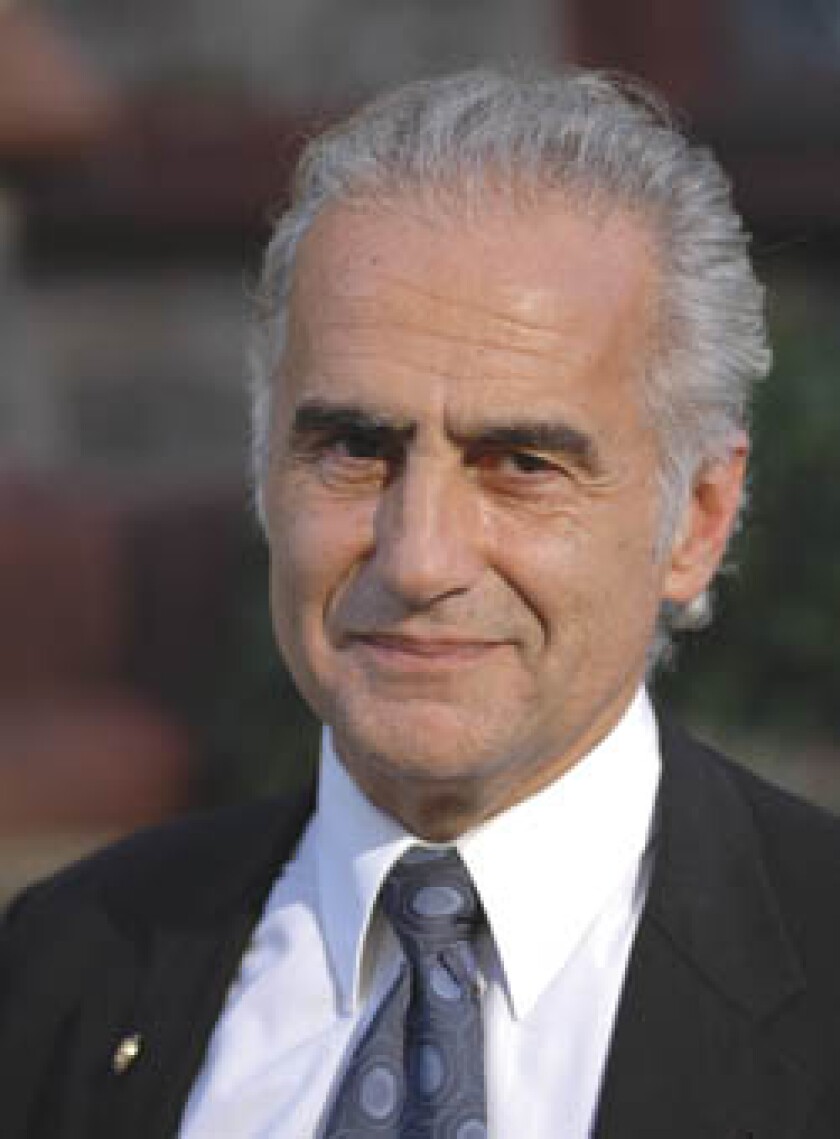
Photo by Steve Barrett
At the time, homelessness was emerging as a concern in American cities. When St. Anthony’s Shrine started Boston’s first bread line since the Depression, Mangano signed up to work it. The affable Mangano became friends with many of the people he fed. And he helped them navigate the social services bureaucracy, advocating on their behalf when they hit snags claiming military benefits or renewing a driver’s license. “I had this experience negotiating record deals in Los Angeles, and I would bring it to bear in its fullness in this local situation for individual homeless people,” Mangano says. “What was important was that it was an expression of Franciscanism.”
This was 25 years ago. But you can’t understand the difference Mangano is making on homelessness today without understanding how he got into this line of work. In his current job as President Bush’s czar on homelessness, Mangano still serves the poor with his Hollywood haggling skills. Only now his mission is to cajole governors, mayors and county executives into not just embracing but owning the elusive goal of ending chronic homelessness. His success owes much to Mangano’s persuasive charm, optimism and willingness to travel almost constantly. For Mangano, solving the homeless problem isn’t just a professional passion. It’s a spiritual calling.
Dressed in smart suits, not brown robes, Mangano, 58, comes off as one part businessman, one part management consultant and one part motivational speaker. His pitch begins with the observation that the homeless problem has only grown worse as governments, nonprofits and churches have put more money into shelters and meal programs. Good intentions, Mangano believes, have only abetted the epidemic and made it seem more intractable. By contrast, Mangano calls himself an “abolitionist.” Stakeholders in some 224 cities and counties have rallied around Mangano’s language by committing to 10-year plans to end chronic homelessness. “We’ve literally changed the verb of homelessness in this country,” he says. “We’ve gone from managing the crisis to ending the disgrace.”
What matters more than rhetoric and the planning is the new thinking behind it all. Mangano advocates focusing on the toughest and most visible part of the problem — the hard-core street homeless, who cost taxpayers dearly in hospital and prison stays. Mangano supports a strategy known as “Housing First,” in which street people are moved out of shelters and into their own apartments, where detox and counseling can be delivered in a more stable setting. But Mangano is open to any tactic, as long as it is backed by data showing that it works to end homelessness rather than shift the problem somewhere else. Mangano’s worldview resonates with local officials who are at their wits’ end on the homeless problem. By framing the issue around research, not ideology, Mangano has forged unlikely alliances between the Bush administration and many Democratic mayors.
As a result, cities such as Atlanta, Dallas and San Francisco are seeing drops in the number of people living on the street. In Denver, which is trying “Housing First” among other strategies, Mayor John Hickenlooper reports an 11 percent decline in the street population. “It’s important to have someone at a high level in Washington who welcomes innovation rather than being suspicious of it,” Hickenlooper says. “What Philip brought to the table was a willingness to experiment — and to look at this issue such that you’re not measuring yourself by how many homeless people you fed but by how many fewer homeless people there are now than there were before.”








